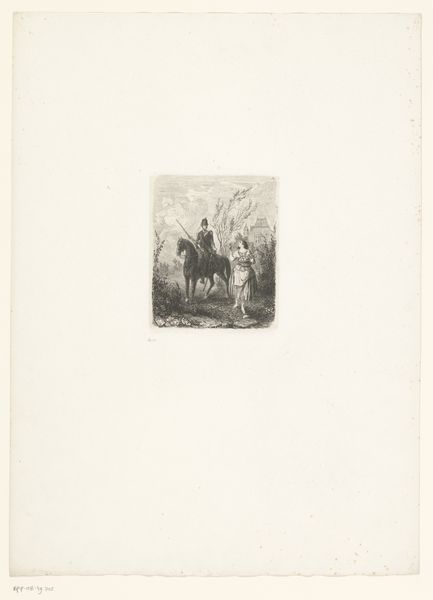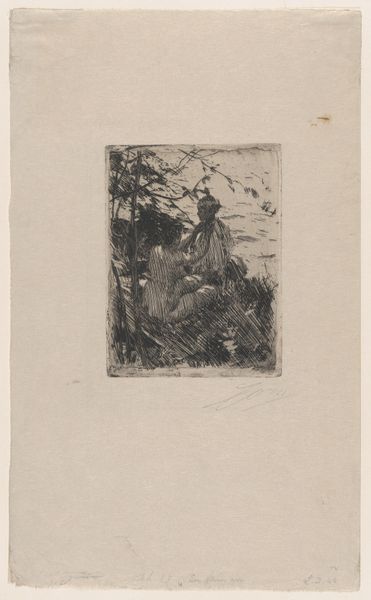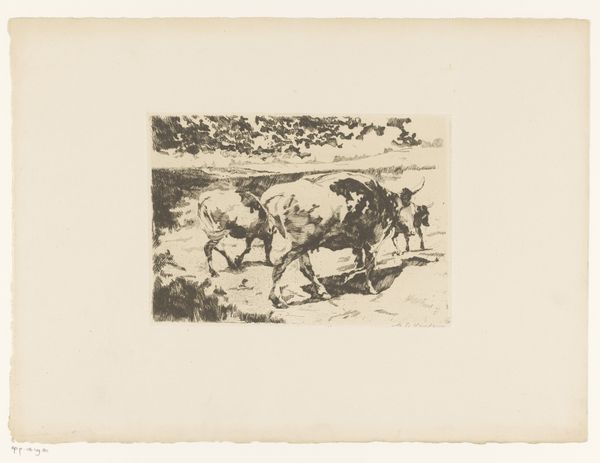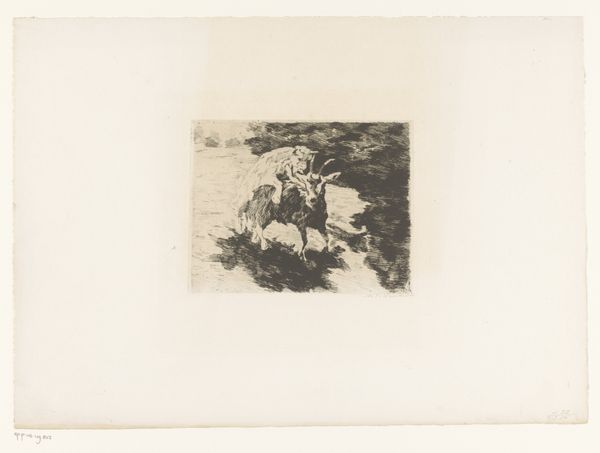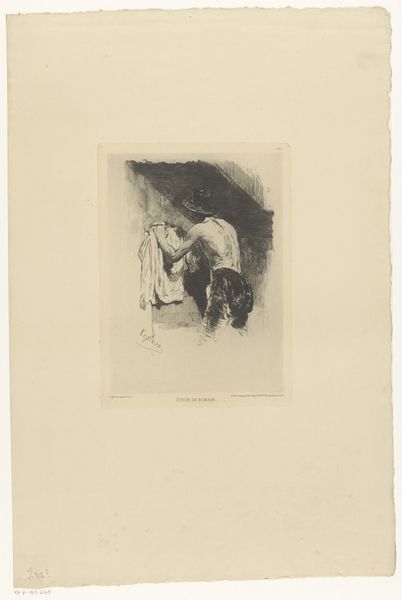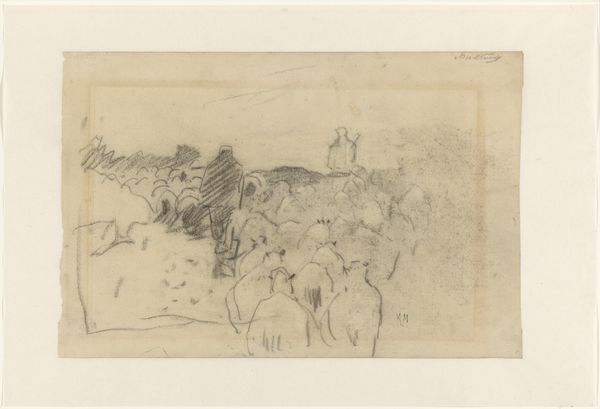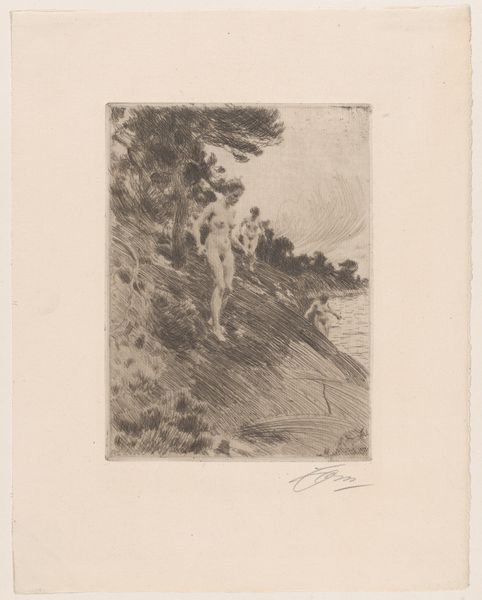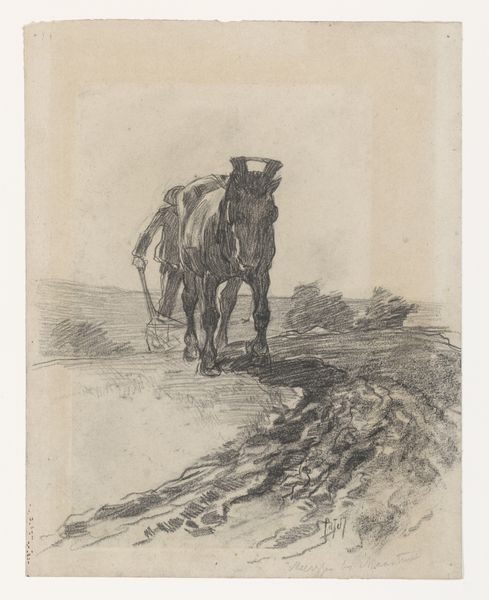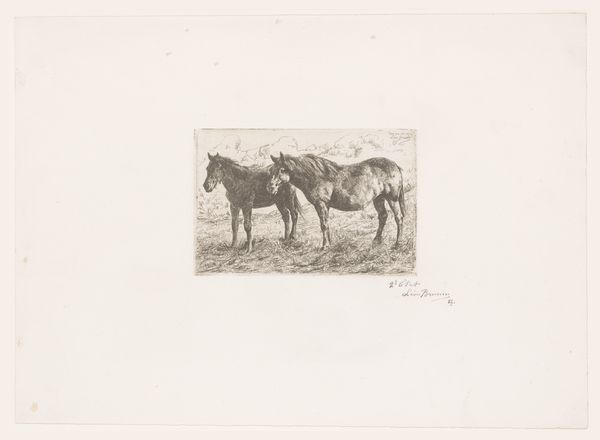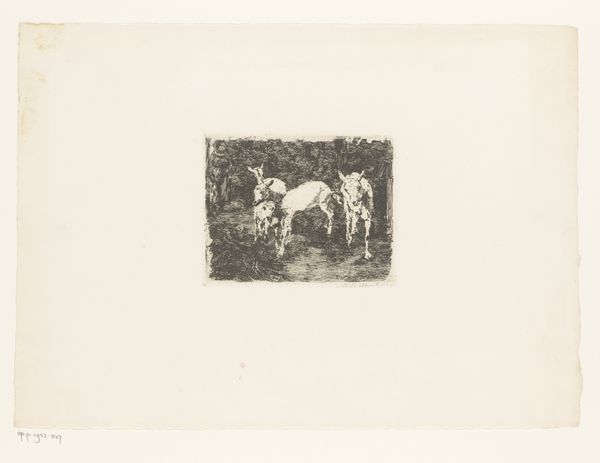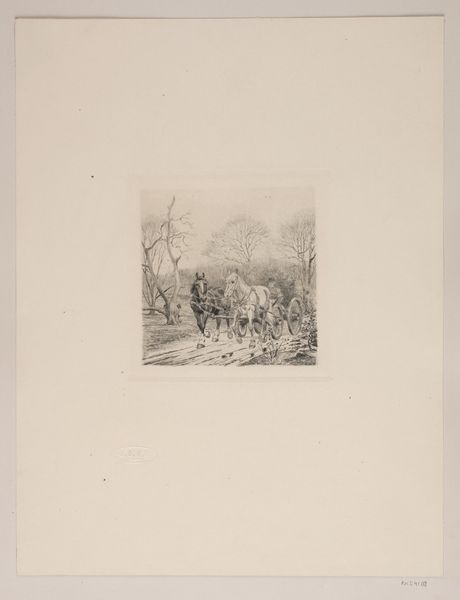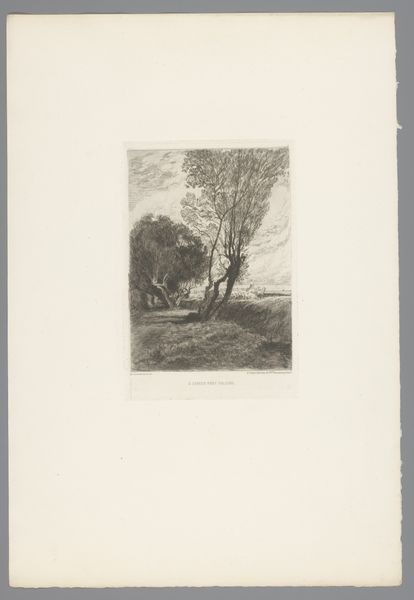
Boulevard met een man en vrouw bij een rijtuig op een regenachtige dag 1834 - 1882
0:00
0:00
print, etching
# print
#
etching
#
landscape
#
figuration
#
realism
Dimensions: height 238 mm, width 158 mm
Copyright: Rijks Museum: Open Domain
Curator: There's a somber, dreamlike quality to this. It almost feels like a memory fading at the edges. Editor: Indeed. We are looking at "Boulevard met een man en vrouw bij een rijtuig op een regenachtige dag" (Boulevard with a Man and Woman with a Carriage on a Rainy Day). It's an etching, and print, dating roughly from 1834 to 1882 and made by Edmond Morin. The location of the artwork is in Rijksmuseum, so in a sense, this landscape depicts Dutch history, as viewed through the lens of figure drawing and a realist approach. Curator: The blurry lines and monochromatic palette create an ethereal feel, as if the rain itself is obscuring reality. What are some symbols can we decipher within this obscured view of a boulevard? Editor: Well, beyond the immediate representation, there’s something inherently classed coded. Consider the setting: A boulevard conjures images of urban modernization but here this infrastructure doesn't equally affect everyone. Instead, a privileged couple rides shielded in their carriage, symbolic of their socioeconomic status, while likely, others on that same street brave the rain unprotected. The tree looms above like nature’s response to urbanization... a poignant reminder of nature's sublime strength. Curator: The lone tree definitely adds a psychological dimension. It is a strong symbol of rootedness but there is vulnerability as its branches look stripped of their leaves from the seasons, echoing a theme of resilience. I imagine it watching countless lives unfold below. Editor: It's fascinating how Morin has captured the nuances of that specific moment in history. I’m really thinking about environmental vulnerability because, in addition to all the above class critiques and historical interpretations, this artist could also have used symbolism to encourage future generations to appreciate the necessity to honor and respect the beauty and potential precarity of natural landmarks. Curator: Yes, a very interesting view of the natural landscape, in relation to humans. It encourages introspection and a questioning of values. Thanks so much for the analysis. Editor: My pleasure. It has encouraged my own reflections regarding a complex artwork about identity, urban progress, and ecological continuity.
Comments
No comments
Be the first to comment and join the conversation on the ultimate creative platform.
